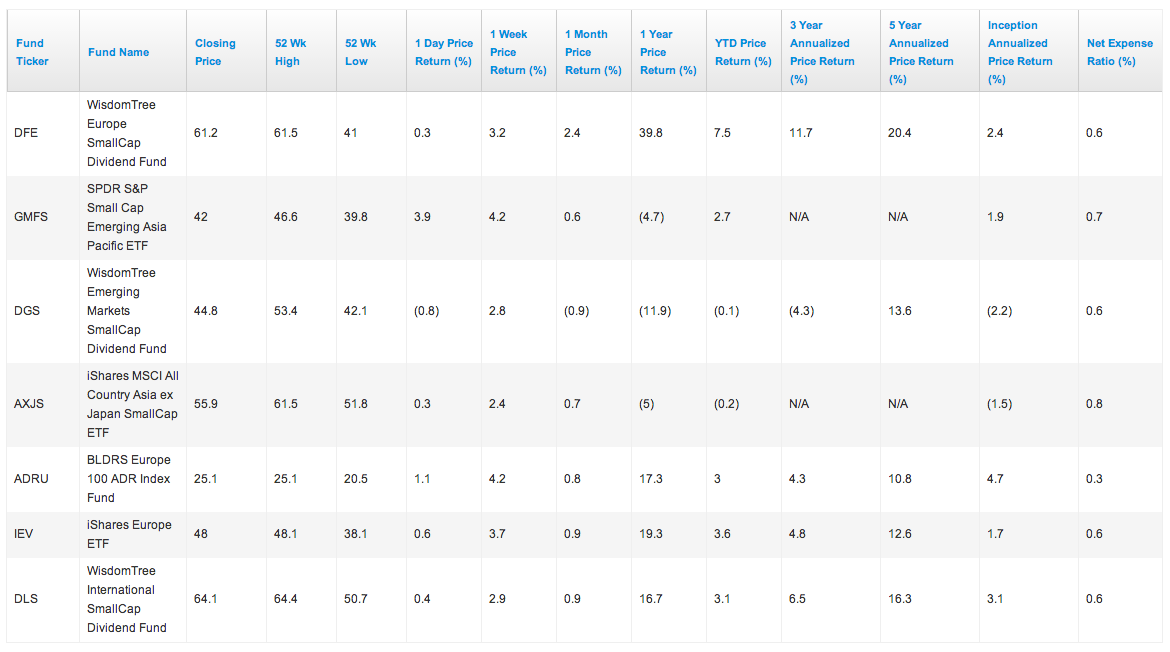Five ETFs to capture the smallcap effect The Globe and Mail
Post on: 18 Июль, 2015 No Comment

Small-cap U.S. indices have a history of outperforming the S&P 500 Index from the middle of December to at least the end of February. Will the “Small Cap Effect” happen again this year?
EquityClock.com notes that the Russell 2000 Small Cap Index has outperformed the S&P 500 Index, on average, from December 15 to March 1. The Russell 2000 Index currently at 1,186 has gained in 19 of the past 25 periods for an average gain per period of 5.35 per cent. The small-cap benchmark has outperformed the S&P 500 Index by an average of 3.09 per cent per period.
The benchmark, which has a higher risk factor than the large-cap S&P 500 Index, seasonally strengthens during the traditional Santa Claus rally period from December 15 to January 3 as investors chase performance into the end of the year. The low volume sessions surrounding the Christmas and New Year’s holidays typically result in gains for equity indices. Investors avoid enacting negative bets during this holiday shortened period prior to the start of the new quarter.
Click on image to enlarge
The significant weighting in the financial sector is also a factor in the strong performance of the Russell 2000 Index at this time of year. Almost a quarter of the market value of the benchmark is composed of financial companies, which are seasonally strong over the same time frame as the Russell 2000. Interest rates seasonally rise through the first four months of the year, benefitting earnings of lending institutions. In addition, anticipation of strong first quarter results by companies operating in the sector fuel gains through to the earnings season in April.
Small Cap benchmarks are in a good position to outperform the S&P 500 Index in early 2015. The U.S. currently is the leader in economic growth among developed nations, including Canada. Earnings from domestic based companies with smaller capitalizations in the U.S. will benefit. In contrast, much of the revenues and earnings from S&P 500 companies comes from slower growing developed nations with depreciated currencies relative to the U.S. Dollar. Strength in the U.S. Dollar is expected to persist at least through the first quarter of the New Year.
Small Cap indices started showing strength relative to the S&P 500 Index at the start of December. The relative strength of the financial sector has been a positive influence.
Owning small-cap exchange traded funds is preferred over owning a basket of individual small cap stocks. Exchange traded funds offer diversification and reduce the volatility of owning individual stocks.
Several small-cap ETFs are available. The most actively traded is the iShares Russell 2000 Index (IWM). Units track performance of approximately 2000 small cap U.S. listed equities that are part of the broadly based Russell 3000 Index.
Canadian investors can choose to purchase a hedged version by owning the iShares Russell 2000 Index Fund, which trades on the Toronto Stock Exchange (XSU). Units trade in Canadian Dollars and are fully hedged against fluctuations in the U.S. Dollar.
iShares offers the second most actively traded U.S. small cap ETF, the S&P Small Cap 600 Index Fund (IJR). Units track the performance of the 600 small cap U.S. listed securities that are part of the S&P 1,500 Index.
iShares also offers a small-cap ETF consisting of Canadian stocks, the S&P/TSX SmallCap Index Fund (XCS). Units track the performance of the smaller, by market capitalization, components of the S&P/ TSX Composite.
Vanguard offers a low cost ETF. Management expense ratio on the Vanguard Small Cap ETF (VBR) is 0.10 per cent. The ETF tracks the performance of the CRSP US Small Cap Index.
Follow Don Vialoux on Twitter: @EquityClock














